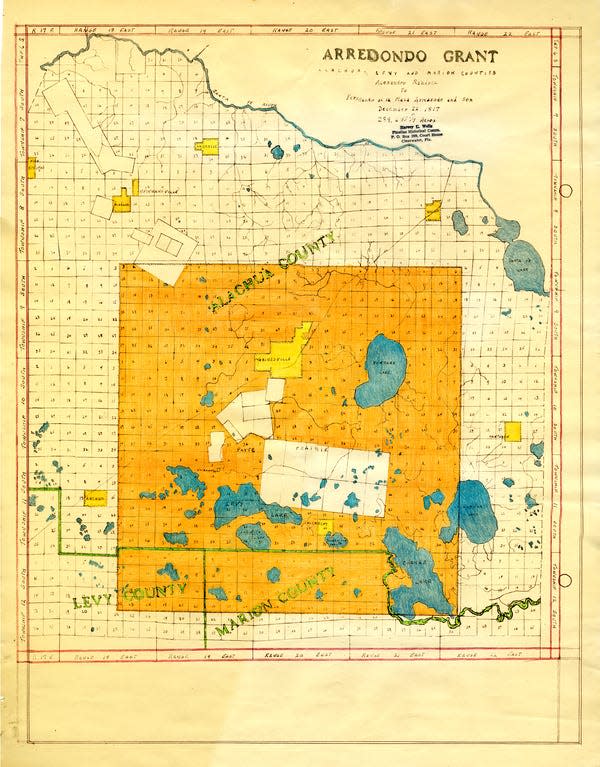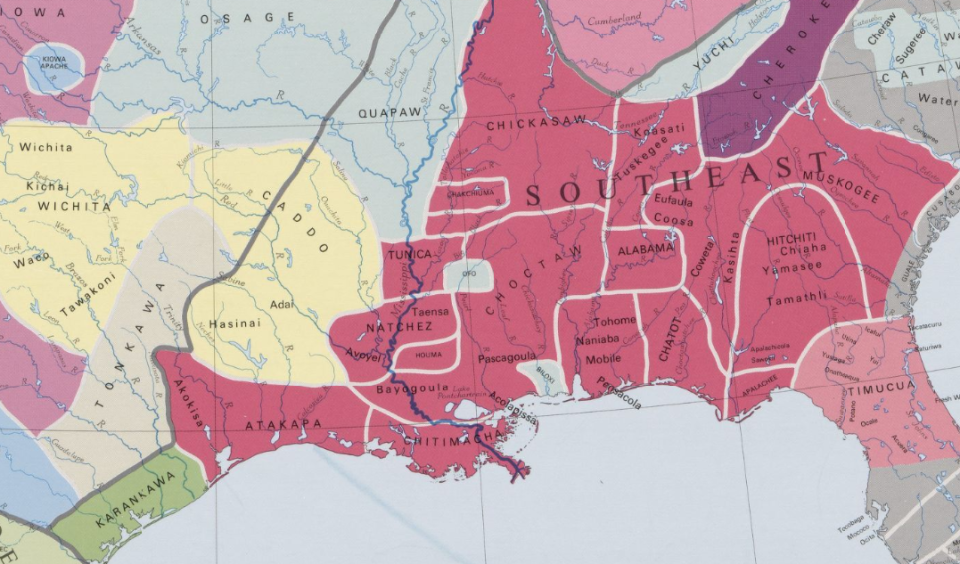'Doctrine of discovery' led to displacement of Native Americans in Florida and beyond
- Oops!Something went wrong.Please try again later.
When you buy a house or other real estate, you conduct a professional title search to make sure no one can claim to own the property or has a lien on it. In this part of Florida, title can be traced back to the Arredondo grant made by the King of Spain in 1817 to a merchant in Havana and his son.
How did the King of Spain acquire a valid title to land in Alachua and neighboring counties, where Creek and Seminole people were then living?
The answer is the doctrine of discovery. In 1493 Pope Alexander VI, the notorious Borgia Pope, divided the Americas, Africa and Asia between Spain and Portugal on the grounds that their navigators had discovered the Western Hemisphere and sub-Saharan Africa.

An earlier Papal decree, Romanus Pontifex, which was issued and reissued by several of his predecessors, had established the right of the King of Portugal "to invade, search out, capture, vanquish, and subdue all Saracens (i.e. Muslims) and pagans whatsoever, and all dominions, possessions, and all movable and immovable goods whatsoever held and possessed by them and to reduce their persons to perpetual slavery, and to apply and appropriate to himself and his successors the kingdoms, dukedoms, counties, principalities, dominions, possessions, and goods."
These documents together gave European Christians exclusive rights to the land and resources of the rest of the world. They were a charter for enslaving and exploiting the people of Africa, Asia and America.
We might dismiss them as historic curiosities except that Chief Justice John Marshall invoked both Papal documents in a unanimous Supreme Court decision in 1823 that established the right of the United States to dispose of the lands occupied by Native American tribes and of the people themselves. Marshall held that the doctrine of discovery gave European nations an absolute right to New World lands that they ceded to the United States by treaty.

Justice Ruth Bader Ginsburg wrote in a unanimous Supreme Court decision in 2005 that, "Under the doctrine of discovery title to the lands occupied by Indians when the colonists arrived became vested in the sovereign — first the discovering European nations and later the original states and the United States."
Not every American agreed with this development. Writing soon after America's struggle for freedom from Britain, a South Carolina patriot did not want to acknowledge any claim of European monarchs to our soil. Dr. David Ramsay began his “History of the American Revolution” (1789) with the doctrine of discovery and the Papal award to the King of Spain.
"This grant was not because the country was uninhabited, but because the nations existing there were infidels; and therefore in the opinion of the infallible donor not entitled to the possession of the territory in which their Creator had placed them,” he wrote.
More from Richard MacMaster:
Gainesville should provide support to asylum seekers
UF food contract should require fair wages, working conditions
No president should be given unlimited power
Ramsay argued that "no European prince could derive a title to the soil from discovery, because that can give a right only to lands and things which have never been owned or possessed, or which after having been owned and possessed have been voluntarily deserted."
He insisted that, "The right of the Indian nations to the soil in their possession was founded in nature. . . and such as no foreigner could rightfully annul."
The idea that sovereignty over North America belonged to the King of England or the King of Spain, who transferred their right to the United States by treaty, was too attractive to be set aside. Following the precedent set in earlier cases and appealing to international law, the Supreme Court determined in 1835 that the King of Spain's grant to the Arredondos was valid.
The Seminoles who had lived and farmed in Alachua County had already been forced from their homes under the Treaty of Moultrie Creek (1823) and would soon be sent on the Trail of Tears to Oklahoma under the Indian Removal Act (1830) and the Treaty of Payne's Landing (1832).

The first coffles of enslaved Africans were already on the march from South Carolina. This is the story embedded in the title to your property and mine.
In recent years many Americans and Canadians have come to the conclusion reached by David Ramsay long ago and recognized the doctrine of discovery as the foundational document for centuries of wrong. It gave our government the right to abrogate treaties and move tribes from their productive or mineral-rich lands and confine them on barren reservations. It was the basis for taking children from their families and their language and culture in Indian Schools.
We cannot rewrite history. How can we make amends?
Richard MacMaster is a retired history professor who lives in Gainesville.
Join the conversation
Share your opinion by sending a letter to the editor (up to 200 words) to letters@gainesville.com. Letters must include the writer's full name and city of residence. Additional guidelines for submitting letters and longer guest columns can be found at bit.ly/sunopinionguidelines.
Journalism matters. Your support matters.
Get a digital subscription to the Gainesville Sun. Includes must-see content on Gainesville.com and Gatorsports.com, breaking news and updates on all your devices, and access to the eEdition. Visit www.gainesville.com/subscribenow to sign up.
This article originally appeared on The Gainesville Sun: Richard MacMaster: Papal doctrine caused Native American displacement

